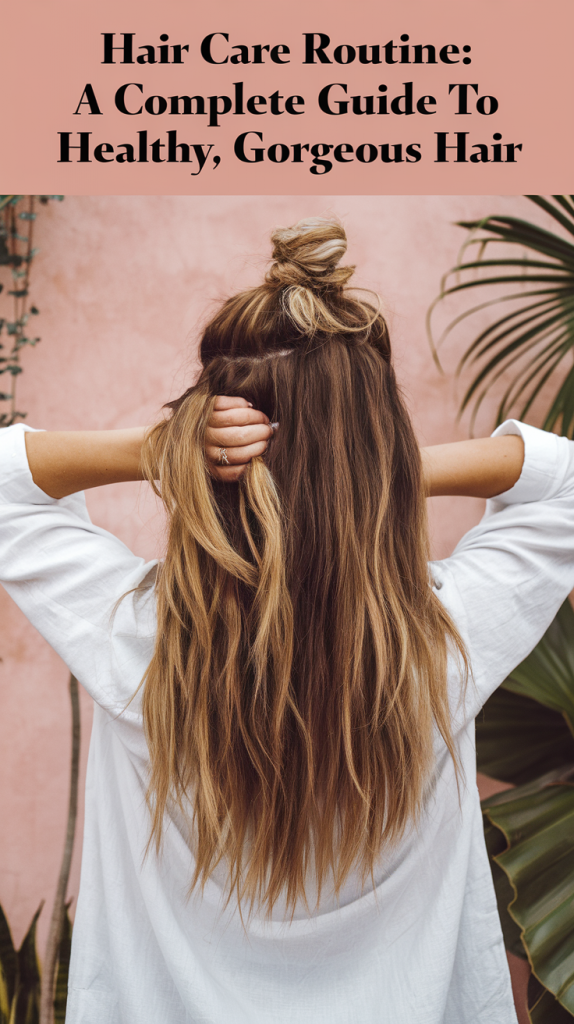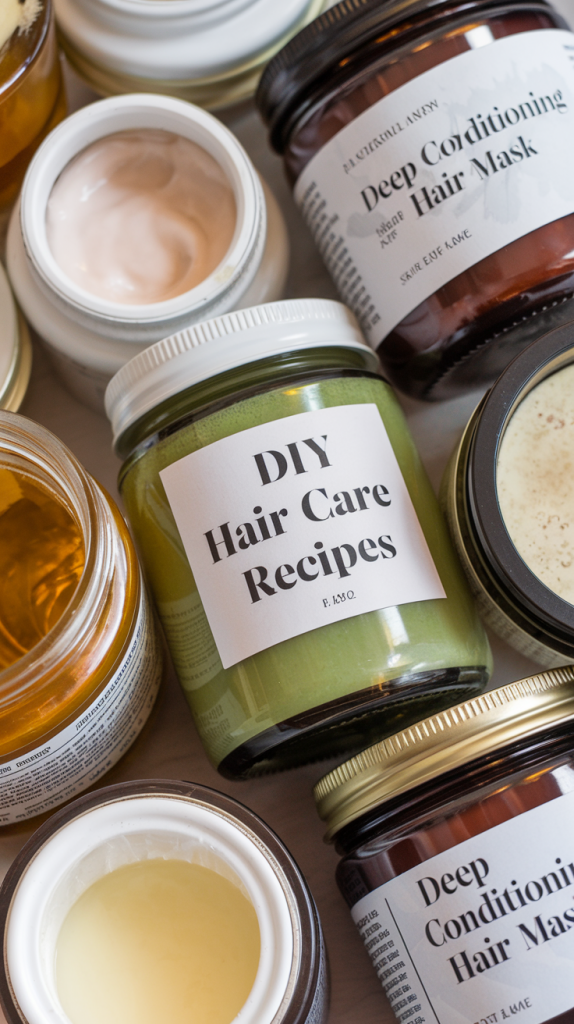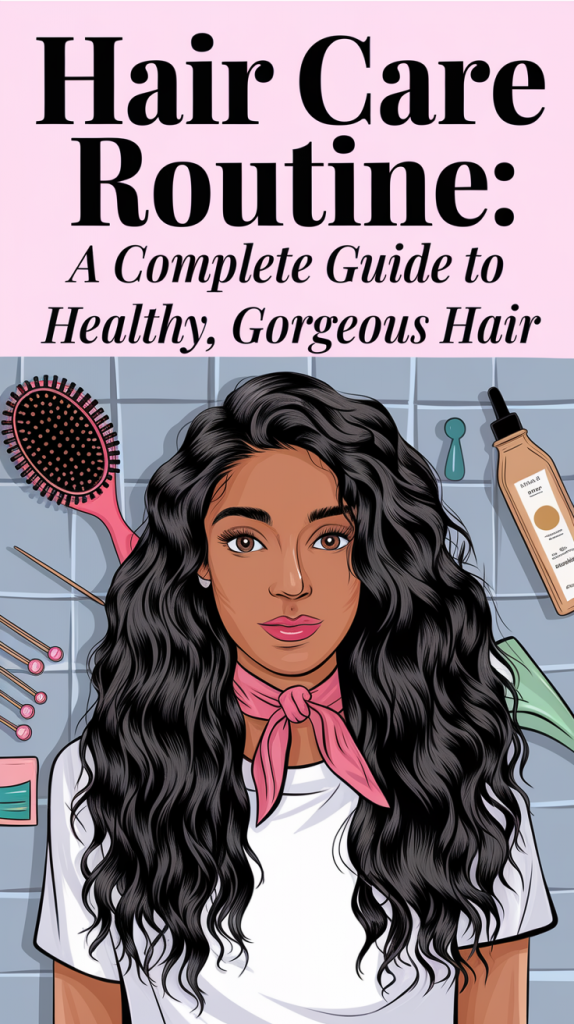Gesundes, kräftiges Haar zu erreichen und zu erhalten muss kein Geheimnis sein. Egal, ob Sie mit Trockenheit, Frizz oder Haarausfall zu kämpfen haben, eine personalisierte Haarpflegeroutine kann den entscheidenden Unterschied machen. Als jemand, der Jahre damit verbracht hat, seine Routine zu verfeinern, möchte ich Ihnen alles vermitteln, was Sie über die Erstellung und Pflege einer Haarpflegeroutine wissen müssen, die für Sie funktioniert.

Ihren Haartyp verstehen
Die Grundlage jeder effektiven Haarpflegeroutine ist das Verständnis Ihres Haartyps. Dies beinhaltet die Bestimmung der Textur, Porosität und des allgemeinen Zustands.
Textur:
-
Straight
: Smooth and shiny but prone to oil buildup. -
Wavy
: Slight bends that can be frizzy without proper care. -
Curly
: Defined loops that require extra moisture to maintain bounce. -
Coily
: Tight curls or coils that need intense hydration.
Porosität:
Die Porosität bestimmt, wie gut Ihr Haar Feuchtigkeit aufnimmt und speichert. Führen Sie einen einfachen Test durch, indem Sie eine saubere Haarsträhne in Wasser legen:
-
Low Porosity
: Hair floats, indicating tightly closed cuticles. -
Medium Porosity
: Hair floats mid-level, showing balanced moisture absorption. -
High Porosity
: Hair sinks quickly, meaning open cuticles that absorb moisture but lose it fast.
| Porosity Type | Characteristics | Recommended Products |
|---|---|---|
| Low Porosity | Floats, tightly closed cuticles | Lightweight conditioners |
| Medium Porosity | Balanced moisture absorption | Regular moisturizers |
| High Porosity | Absorbs moisture but loses it fast | Rich, hydrating formulas |
Kopfhautgesundheit:
Der Zustand Ihrer Kopfhaut – fettig, trocken oder ausgeglichen – spielt ebenfalls eine Schlüsselrolle in Ihrer Routine. Die Berücksichtigung der Bedürfnisse Ihrer Kopfhaut sorgt für starkes, gesundes Haarwachstum.
Tägliche Haarpflegeroutine
Eine konsequente tägliche Routine ist unerlässlich für die Erhaltung gesunden Haares.
1.Reinigung
- Use a sulfate-free shampoo suited to your hair type to gently cleanse your scalp and remove buildup.
-
Cleansing frequency:
-
Oily Hair
: Daily or every other day. -
Dry Hair
: Every 3-4 days. -
Normal Hair
: Every 2-3 days.
-
2.Pflege
- Apply conditioner from the mid-lengths to the ends to hydrate and detangle. Avoid applying directly to the scalp.
-
Choose products tailored to your hair’s porosity:
- Low porosity: Lightweight conditioners.
- High porosity: Rich, moisturizing formulas.
3.Feuchtigkeitspflege und Versiegelung
-
Use a leave-in conditioner or hair oil on damp hair to lock in moisture. Select oils based on your hair type:
- Lightweight oils (e.g., argan or jojoba) for low porosity hair.
- Heavier oils (e.g., castor or coconut) for high porosity hair.
4.Entwirren
- Detangle gently using a wide-tooth comb or your fingers, starting from the ends and working up to the roots.
5.Styling
- Minimize heat styling to prevent damage. Use a heat protectant spray if needed.
- For natural curls, air-dry or use a diffuser on low heat to preserve curl patterns.
| Daily Routine Step | Key Actions |
| Cleansing | Shampoo as per hair type |
| Conditioning | Focus on mid-lengths to ends |
| Moisturizing | Lock in moisture with leave-ins |
| Detangling | Use a wide-tooth comb |
| Styling | Minimize heat, use protectants |
Wöchentliche Haarpflegeroutine
1.Intensivpflege
- Apply a deep conditioning mask once a week to replenish moisture and repair damage.
- Look for ingredients like shea butter, keratin, or avocado oil for maximum hydration.
2.Kopfhautpflege
- Perform a scalp massage with oils like rosemary or tea tree to stimulate blood flow and promote healthy growth.
- Use a clarifying shampoo or scalp scrub once a month to remove buildup.
3.Tipps für das Haarwachstum
- Incorporate essential oils like peppermint into your routine for their growth-boosting properties.
- Avoid tight hairstyles that can cause tension on the scalp.
Monatliche Haarpflegeroutine
1.Spitzen schneiden
- Schedule trims every 6-8 weeks to remove split ends and maintain your hair’s health.
1.Feuchtigkeitsspendende Haarmaske
- If your hair is weak or chemically treated, apply a protein mask monthly to strengthen the hair shaft and prevent breakage.
Haarpflege für verschiedene Lebensstile
-
Active Lifestyles
: Rinse hair after workouts to remove sweat and buildup. Use dry shampoo between washes. -
Swimmers
: Protect hair with a swim cap or pre-treat with coconut oil to prevent chlorine damage. -
Busy Schedules
: Simplify your routine with multitasking products like 2-in-1 leave-in conditioners and heat protectants.
Saisonale Haarpflegetipps
-
Summer
:- Use UV-protectant sprays to shield hair from sun damage.
- Incorporate anti-humidity products to fight frizz.
-
Winter
:- Hydrate with leave-in treatments to combat dryness.
- Protect hair with hats lined in silk or satin.
Zusätzliche Tipps für gesundes Haar
-
Balanced Diet
: Nourish your hair from within with foods rich in biotin, omega-3s, and vitamins A and E. -
Hydration
: Drink plenty of water to maintain hair and scalp health. -
Silk or Satin Accessories
: Sleep on silk pillowcases and use satin scrunchies to reduce breakage. -
Protective Hairstyles
: Styles like braids or buns minimize environmental damage and reduce manipulation. -
Debunking Myths
: Don’t fall for misconceptions like “trimming makes hair grow faster.” Hair growth starts from the scalp, not the ends.

DIY-Haarpflegerezepte
2.Kopfhautpeeling
Zutaten:
- 1 ripe avocado
- 2 tablespoons honey
- 2 tablespoons olive oil Directions:
- Mash avocado and mix with honey and olive oil.
- Apply to hair, focusing on the ends, and leave for 30 minutes before rinsing.
1.Wie kann ich meinen Haartyp bestimmen?
Zutaten:
- 2 tablespoons brown sugar
- 2 tablespoons coconut oil Directions:
- Mix ingredients and gently massage into the scalp to exfoliate and stimulate growth.
Häufig gestellte Fragen
2.Wie oft sollte ich meine Haare waschen?
Beobachten Sie die natürliche Textur Ihres Haares, wenn es sauber und luftgetrocknet ist. Führen Sie einen Porositätstest mit einer Haarsträhne in Wasser durch.
3.Wie kann man Spliss am besten vorbeugen?
Die Häufigkeit hängt von Ihrem Haartyp und dem Zustand Ihrer Kopfhaut ab. Fettiges Haar muss möglicherweise täglich gewaschen werden, während trockenes Haar von weniger häufigem Waschen profitiert.
4.Kann ich die gleichen Produkte das ganze Jahr über verwenden?
Regelmäßiges Spitzen schneiden, schonende Behandlung und ausreichende Feuchtigkeitspflege helfen, Spliss vorzubeugen.
5.Welche Rolle spielt die Ernährung für die Haargesundheit?
Nein. Saisonale Veränderungen erfordern oft Anpassungen Ihrer Haarpflegeroutine, um Feuchtigkeit, Trockenheit oder Sonneneinstrahlung zu berücksichtigen.
6.Sind DIY-Behandlungen wirksam?
Eine nährstoffreiche Ernährung unterstützt ein gesundes Haarwachstum. Konzentrieren Sie sich auf Lebensmittel mit viel Biotin, Omega-3-Fettsäuren und den Vitaminen A und E.
Fazit
Ja! Natürliche Inhaltsstoffe wie Avocado, Honig und Kokosöl können Feuchtigkeit und Nährstoffe ohne aggressive Chemikalien liefern.
